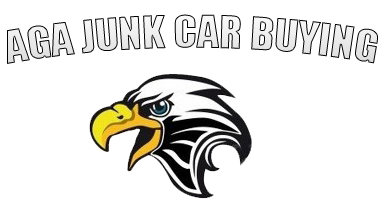Have you ever experienced the moment of panic when the check engine light suddenly lights up on your car’s dashboard?
We’ve all been there, wondering what could be wrong with our vehicle.
The check engine light, a critical component of the car’s onboard diagnostics system, can reveal a multitude of issues varying from minor faults to serious mechanical problems.
Acting as an early warning system, this light illuminates to alert you that your vehicle may need attention.
What causes the check engine light to come on?
The check engine light can come on for a variety of reasons, and is an indicator that there may be a problem with your vehicle’s engine or emissions system.
Some common causes include:
- Loose or defective fuel cap: A loose, damaged or missing fuel cap can cause the check engine light to come on. It affects fuel system pressure, triggering the light.
- Oxygen sensor malfunction: The oxygen sensor measures the amount of unburned oxygen in the exhaust system. A faulty sensor can reduce fuel efficiency and increase emissions.
- Catalytic converter problems: A faulty catalytic converter can trigger the check engine light and can lead to reduced engine performance and increased emissions.
- Air mass sensor problems: The air mass sensor measures the amount of air entering the engine to determine the correct fuel to air ratio. Malfunctioning can cause poor performance.
- Spark plug or ignition coil problems: Faulty spark plugs or ignition coils can cause misfiring, reduced engine performance and illuminate the check engine light.
- Emission control system problems: Problems with the emission control system, such as the EGR valve or EVAP system, can cause increased emissions and trigger the light.
- Throttle position sensor malfunction: The throttle position sensor monitors throttle position and helps control fuel injection. Malfunction can affect engine performance.
- Engine vacuum leaks: Leaks in the engine vacuum system can cause erratic idling and activate the check engine light.
- Electrical or wiring problems: Faulty wiring or electrical connections can cause false readings and activate the check engine light.
- Transmission problems: Problems with the transmission can also cause the check engine light to come on, since the engine and transmission work closely together.
It’s essential to address the issue promptly when the check engine light comes on to prevent potential damage and costly repairs.
A diagnostic scan can pinpoint the exact problem and guide you in taking the necessary steps to fix it.
When is the check engine light a serious problem?
The check engine light is considered a serious problem when it flashes or when it remains on for an extended period of time.
Flashing of the check engine light usually indicates a serious problem that requires immediate attention.
In such cases, driving the vehicle should be avoided, as continued operation may cause further damage to the engine or emission control systems.
Is it safe to drive with the check engine light on?
Although it may not be dangerous to drive a short distance with the check engine light on, it is important to address it promptly.
If the light comes on while driving, you should immediately assess the situation.
If the vehicle appears to be operating normally, you should check it as soon as possible.
However, if the light flickers or you notice any significant changes in your vehicle’s operation, such as loss of power, unusual noises or erratic behavior, it is best to pull over in a safe place and seek professional help.
Always remember that ignoring the check engine light can end up causing more significant engine damage and more costly repairs.
What should you do if the check engine light is flashing?
If the check engine light is flashing, it is crucial to take immediate action, as it indicates a serious problem with your vehicle’s engine.
Here’s what to do if you see the check engine light flashing:
1. Pull over safely:
If you notice the check engine light flashing while driving, it is essential that you stop in a safe place as soon as possible.
Continuing to drive with a flashing check engine light can cause further engine damage and lead to costly repairs.
2. Turn off the engine:
Once you have stopped in a safe place, turn off the engine to avoid any potential damage and give the engine a chance to cool down.
3. Check the fuel filler cap:
In some cases, a loose or damaged fuel cap can cause the check engine light to flash. Before seeking professional help, check the fuel cap and make sure it is tight.
4. Do not continue driving:
Do not attempt to drive the vehicle if the check engine light is flashing. Driving with the check engine light flashing can cause severe engine damage and pose a safety hazard.
5. Ask for help:
If you cannot solve the problem yourself, call for roadside assistance or have the vehicle towed to a reputable mechanic or auto repair shop for diagnosis.
6. Have the vehicle diagnosed:
A flashing check engine light often indicates a serious problem, such as an engine misfire or a problem with the catalytic converter.
To identify the specific problem, have a qualified mechanic scan the vehicle’s on-board computer system for fault codes.
The diagnostic code will help pinpoint the problem, and the mechanic can provide an accurate assessment and recommended repairs.
And did you know that you can get rid of your car for money, even with damaged parts or water leaks? So don’t worry if you can’t afford expensive repairs.
How long can the check engine light stay on?
If the check engine light comes on due to a minor problem, such as a loose gas cap or temporary sensor failure, it may turn off after a few driving cycles or after the vehicle is driven for a certain number of miles.
This can typically range from 50 to 100 miles.
On the other hand, if the check engine light is indicating a more significant problem, such as a sensor malfunction or a problem with the engine emissions system, it may remain on until the problem is fixed and the vehicle’s computer is reset.
If your car no longer works or has some damaged parts, the best thing to do is to sell it for cash to AGA Cash Junk Cars Inc.!
We pay top dollar for any type of car in any condition. Call us (312) 401-2157 today and get cash for your unwanted vehicle!
In conclusion, the check engine light is an essential feature of your vehicle that signals potential problems.
Whether it’s a minor problem, such as a loose gas cap, or something more serious, such as a malfunctioning sensor, it’s critical to never ignore this warning indicator.
Always remember that early intervention can prevent minor problems from becoming major repairs.
It is always advisable to consult a professional to accurately diagnose the problem when the check engine light comes on.
Regular vehicle maintenance can also help prevent many of these problems from occurring.
Drive with caution and keep your vehicle in good condition for a smooth, worry-free ride.


